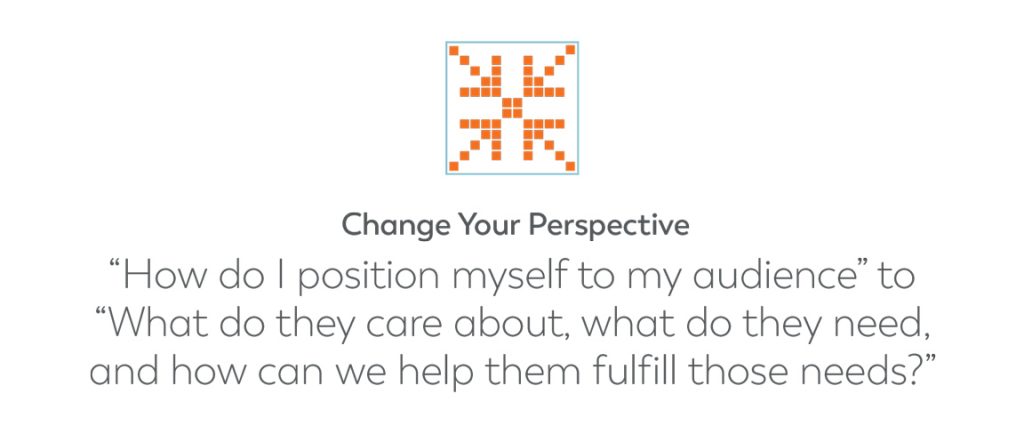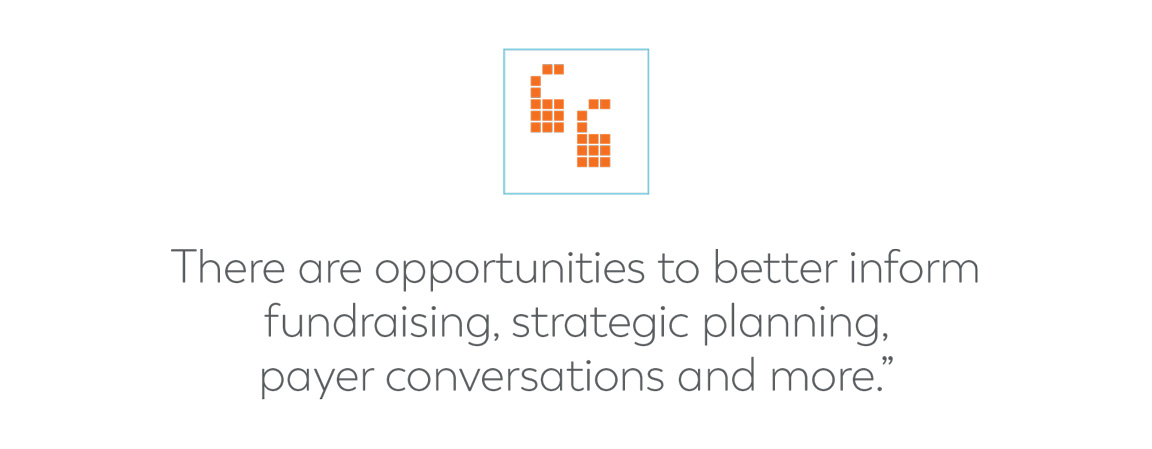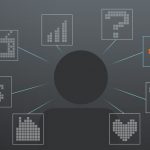Unite Big Data and Traditional Research to Get to the Heart of Your Audience
In the face of an increasingly competitive landscape, home and hospice care agencies need a thorough understanding of their market to thrive – one that goes beyond the numbers to achieve a nuanced perspective of the human side of the individuals who make up that market. Research is one of the gateways to achieving that understanding. The current era of not only “big data,” but “big data for all” has expanded (and complicated) the scope of what that research can and should involve, and increased the potential for the insights it can achieve.
We have found that a combination of “traditional” market research along with rich, AI-driven third-party consumer insights data has proven to support a robust foundation for building successful, audience-centric brands and strategies. These research practices can really be applied to any audience, but here we’ll focus on a few of the most vital for home care providers: prospective patients and their family healthcare decision makers, as well as the increasingly stretched-thin nursing workforce. Staying competitive and resonating with these key audiences requires a deep, thorough and multifaceted view of them.

A Bi-Focal Perspective
Different research instruments offer unique lenses through which you can view and understand your audiences. For simplicity’s sake, consider that there are generally two ways market research can help you learn about them.
The first is understanding who they are in a broad sense. Here we “zoom out” to see what they value as individuals, what their daily lives look like in their entirety – in short, beyond the context of their potential interaction with your agency or even healthcare overall. This is where leveraging third-party consumer data can be extremely powerful. Due to the sheer scale and reach with which this “big data” is gathered, it can tell you things about an audience that no individual survey or focus group alone can.
The second is specifically “zooming in” to understanding their views of and expectations relative to home and hospice care (or employment). For families and patients, that can include their awareness of you and other providers in your market, how they want to learn about providers, and how they will make decisions about a provider for a loved one. Conducting targeted market surveys, interviews and focus groups of your audiences gives you the highest degree of customizability in digging into some of the specific topics that are crucial to helping your organization make the soundest strategic decisions.
To build and sustain a brand that truly connects with your audiences on both a rational and emotional level, it’s essential to understand and continually observe key audiences through both lenses.

Expanding Your Perspective: The Role of Big Data in Market Research
An audience-centric approach begins with a fundamental shift in thinking from “How do I position myself to my audience” to “What do they care about, what do they need, and how can we help them fulfill those needs?” Answering those questions requires a comprehensive understanding about them with detailed demographic, psychographic and behavioral insights. This is how we get at the “why” behind your audiences.

Using the high-quality, in-depth consumer data that is now provided by some third parties enables providers to gain insights into the lives and minds of their market’s prospective patients, family healthcare decision makers and the healthcare workforce in the area. It can provide a more complete picture of the audience and segments within it, revealing many aspects that will influence how they interact with your agency and how your outreach can best build relationships with them.
This kind of data is cultivated through a combination of online behavior tracking, large-scale national surveys and artificial intelligence. Thus, it’s not only based on what people say, but how they actually act and what they look for online. That allows us to know things such as:
- Personal values, motivations and psychological drivers
- Media consumption habits and technology preferences
- Health management behaviors, medical conditions and attitudes toward healthcare
- Consumer preferences, interests and hobbies
- Home and family details, life stages and living arrangements
- Prioritized societal/charitable issues, political viewpoints and religious beliefs
- Financial behaviors
- Web browsing habits
This wealth of information can help you understand the underlying motivations, values, attitudes and beliefs of your audiences that drive their decision-making process. You can explore what the reality of their daily life looks like, what they care about most, what drives their emotions and much more — and use that perspective to craft more personalized and persuasive messages that connect with them on a deeper level.

For family caregivers, for instance, you could leverage knowledge about common media consumption habits, personal values and web browsing habits to create targeted marketing campaigns that speak meaningfully to this audience’s perspective on the platforms they use most. Likewise, insights can feed targeted recruitment campaigns that highlight the aspects of your organization that are most attractive to potential candidates in the area. Beyond these two key audiences, there are opportunities to better inform fundraising, strategic planning, payer conversations and more. A deep understanding of the personal life priorities and most important societal and charitable issues for prospective area donors, for example, can help craft extremely compelling fundraising campaigns.
One of the most intriguing and, often, insightful aspects to look at is personal values. These psychology-grounded values form the stable lens through which an individual perceives their world. Values reflect someone’s priorities, guide how decisions are made and motivate actions, and they have been demonstrated to predict and explain a broad range of common consumer behaviors. It also represents a psychological “core” that is relatively unchanging over one’s life. (Though it can gradually shift over several years and also suddenly shift in response to major life-changing events. For example, as individuals grow older, the values of tradition and conformity often become more important.)
It’s actually an oversimplification to say that this kind of data is “zoomed out” or generalized, since it can offer quite a granular understanding of an audience, often spanning thousands of different attributes about them.
However, keep in mind that this kind of large-scale big data is aggregated to serve the audience insight needs of a broad range of healthcare providers, other industries, media enterprises, political endeavors, advocacy efforts and more. It is not necessarily data tailored to every unique and specific question you might want to answer for your audience, which is why more traditional marketing instruments still play a vital role.

Zeroing in on Specific Home and Hospice Care Needs
One advantage of traditional research methods, such as market surveys, is that they are endlessly customizable, allowing agencies to collect data on areas of interest that pertain specifically to home and hospice care.
For the patient and family audience, you can get to the heart of how to serve them best and dig into the specific needs, preferences and expectations that relate to your agency and its services. You can also gain a greater understanding of the perceptions and behaviors that directly impact each stage of their engagement with home and hospice care – from overall service and provider awareness, to what differentiators matter most to them, how they will learn about and choose a provider, and what barriers may cause them to avoid seeking help.
For example, we use surveys to see what kinds of misperceptions about hospice are more prevalent for a provider’s market so we know which hospice education messages to prioritize. We can also get a concrete sense of how many decision makers know the name of a provider and their competitors, and what – if any – perceptions and associations they have with those organizations’ brands, as well as how they’d want to learn more about home care and hospice providers. We can also learn what specific benefits, services and messaging themes are the most important for them in considering different care providers for their loved one and their own needs as a caregiver.
For prospective healthcare employees, traditional market research methods let us assess their views on a career in home or hospice care relative to other care settings, including what specifically would attract and/or deter them from working in those settings. We can also examine attitudes toward their current work environment, what they find most fulfilling about working in the field, and what kind of training and upskilling opportunities appeal most to them. These insights in part allow providers to align their culture and build a compelling “employer brand” that attracts top talent.
Though I’ve used the word “traditional” here for these forms of research, the means of conducting them have actually advanced quite a bit since the days of dialing random phone numbers. Randomized yet highly targetable online and mobile device engagement-based survey technologies provide potent additional means to reach a strong sample of your market accurately and cost effectively.

Bringing It All Together to Understand and Connect
In the end, it comes down to knowing your audience, meeting their needs and speaking their language. However, in a world of big data and even bigger competition, home and hospice care agencies can’t afford to overlook the incredible resources we have today for achieving that understanding on a deeper level at scale.
Combining traditional market surveys and powerful consumer insight data enables you to achieve more comprehensive and actionable market insights that span both the rational and emotional aspects of your audiences. After all, home and hospice care providers are not only in the business of caring for bodies and minds, but also in the art of understanding hearts. These insights enable crafting strategies and messages to stand out in a competitive landscape while also helping strengthen genuine connections that truly matter.











